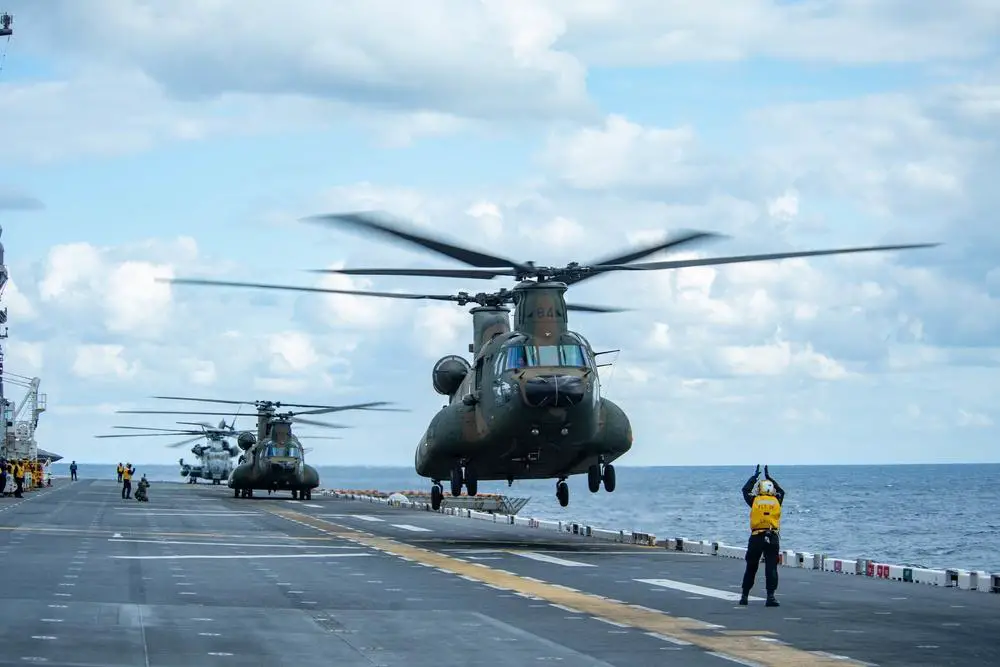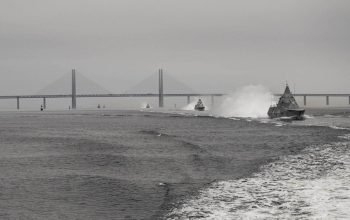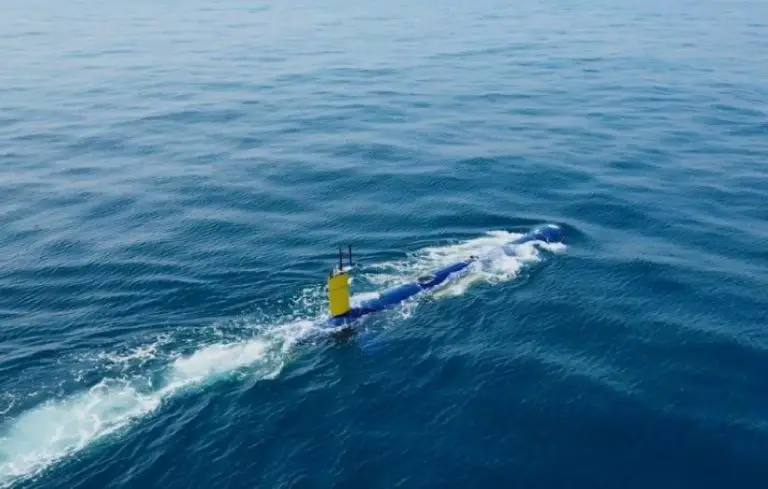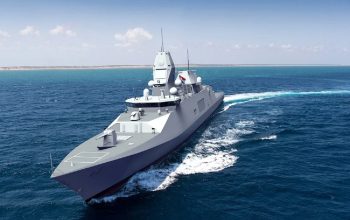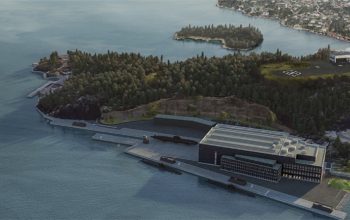Multiple elements of the U.S. Navy, Marine Corps and Air Force continue to operate in the vicinity of Okinawa during Exercise Noble Fusion, alongside the Japan Ground Self-Defense Force (JGSDF) on February 6, 2022. The Noble Fusion team worked together to conduct aircraft refueling, both on the ground and in the air during day and night. Additionally, the team worked with allied helicopters, came ashore in small boats, conducted an aerial night strike and established a simulated Expeditionary Advance Base (EAB) in a secluded coastal area of Okinawa. The day’s events were accomplished under the direction of Combined Task Force (CTF) 79 and CTF-76.
To begin the day, the 11th Marine Expeditionary Unit (MEU) coordinated with the amphibious assault ship USS Essex (LHD 2) to refuel a Navy P-8 Poseidon aircraft in a simulated landing zone not favored or supported by allied forces. Marines from the 11th MEU loaded expeditionary capabilities into multiple MV-22B Osprey aircraft and flew to support refueling ashore from the Essex, while coordinating with the crew of the P-8 to ensure correct timing of aircraft arrival. The refueling improves Marine Corps and Navy integration and further develops capabilities to maintain maritime patrol and reconnaissance aircraft and reduce these time on the ground.
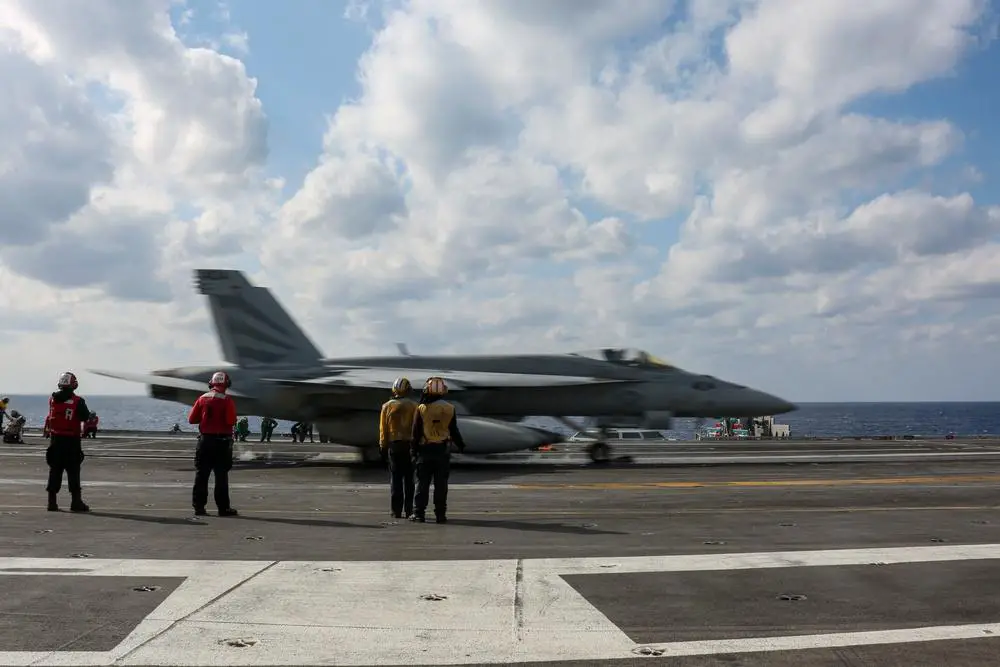
“Today, our joint and naval expeditionary forces conducted lethal sea-control operations by seamlessly integrating surface, air, and fires assets day and night across the physical, electromagnetic, and information domains,” said Col. Charles Readinger, chief of staff, 3rd Marine Expeditionary Brigade. “Coordinating maneuver and employment of Japanese and American aviation, fires assets from the MEUs, transitions between our amphibious platforms to and from the beaches, and especially our night air-to-air refueling all spotlight a superior level of integration and sustain our ability to quickly respond to whatever our nations ask of us in the Indo-Pacific region.”
Simultaneously, in the East China Sea, JGSDF coordinated with the 31st MEU to exercise landing procedures with their CH-47 Chinook helicopters aboard the amphibious assault ship USS America (LHA 6). After the helicopter landed, JGSDF soldiers with the Amphibious Rapid Deployment Brigade (ARDB) conducted personnel loading and unloading drills to familiarize the troops with integrated procedures. During this evolution, and throughout Noble Fusion, JGSDF liaisons aboard the America assisted with the integration of Japanese soldiers with American Navy and U.S. service members.
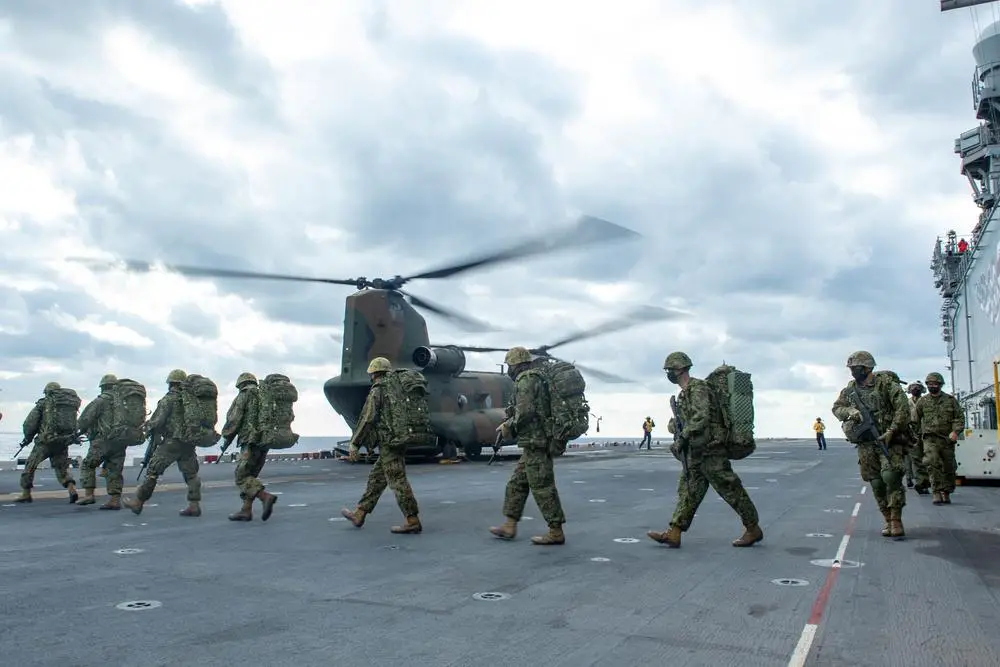
Operations continued with EABO training in the northern Okinawa region. Two Landing Craft, Air Cushioned (LCAC) departed the America and landed on the shores of Kin Blue beach under the direction of the 31st MEU. The MEU conducted a ship-to-shore movement to deploy a High Mobility Artillery Rocket System (HIMARS) to the beach, set up the launch site and establish control over a sector of littoral terrain. Establishing sea control helps interdict potential adversary movements and also enables the seizure of key maritime terrain.
In the evening, the 31st MEU conducted a small-boat raid onto the beach at Camp Courtney to simulate the seizure of an adversary-controlled key terrain feature, and quickly eliminated the simulated enemy combatants in the immediate area. After securing the beach, the Battalion Landing Team moved out along the coast in search of simulated enemy missile and radar systems. As the team moved on the ground, FA-18E Super Hornets from the aircraft carrier USS Abraham Lincoln (CVN-72) as well as AH-1Z Viper and UH-1Y Venom helicopters from the 31st MEU orbited overhead ready to provide close air support.
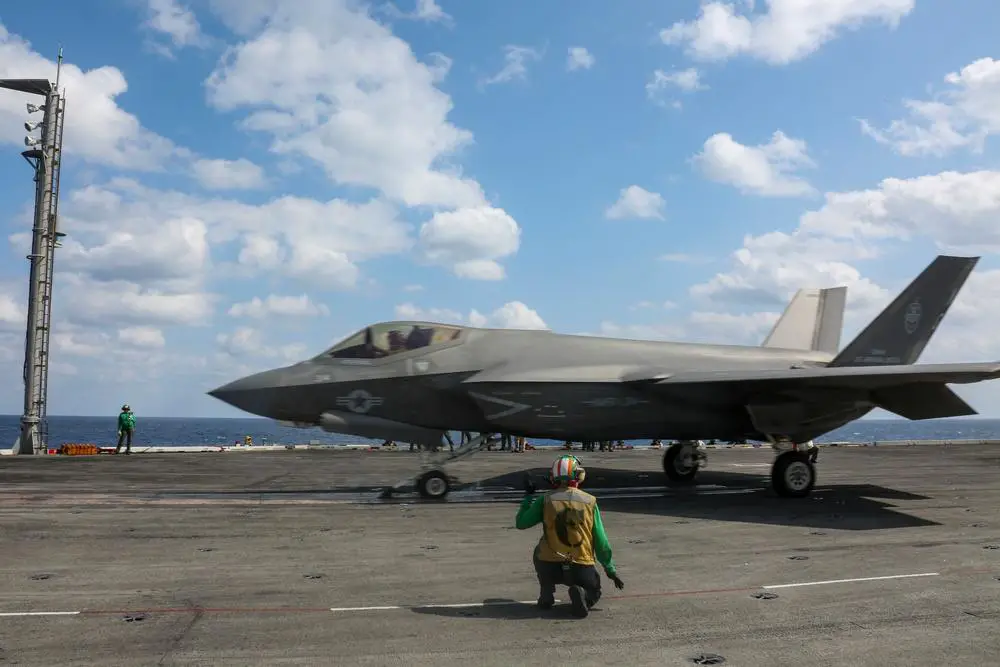
The culminating event of the day was a night strike in the First Island Chain by F-35C Lightning aircraft from the Lincoln and AV-8B Harriers from the Essex, along with F-18E Super Hornets acting as an aggressor force. Night aerial refueling supported the strike, with 11th MEU AV-8B Harrier attack aircraft being refueled by KC-130J Hercules aircraft assigned to Marine Aircraft Group 12. Aerial refueling, also known as air-to-air refueling, refers to the process of transferring of fuel from a military tanker aircraft to fixed-wing jets, helicopters and other military aircraft while in flight. Aerial refueling is utilized to extend the range or flight time, and doing it at night takes special consideration, training and utmost care.
E-2D Advanced Hawkeye aircraft provide aerial over-watch and airborne early warning support to both the small boat raid on the beach and the aviation night strike in the littorals. CTF 76 and 79 exercised command and control from distributed locations to coordinate the events and carefully synchronized air, land and sea movements, which showcases the ability to seize key terrain in a contested environment and help defend allies in the region if called upon. The Navy Marine Corps team regularly conducts integrated naval expeditionary training throughout the region in order to maintain readiness, reinforce our commitment to allies and partners, as well as continue to bolster shared security, stability, and peace in the Indo-Pacific.
